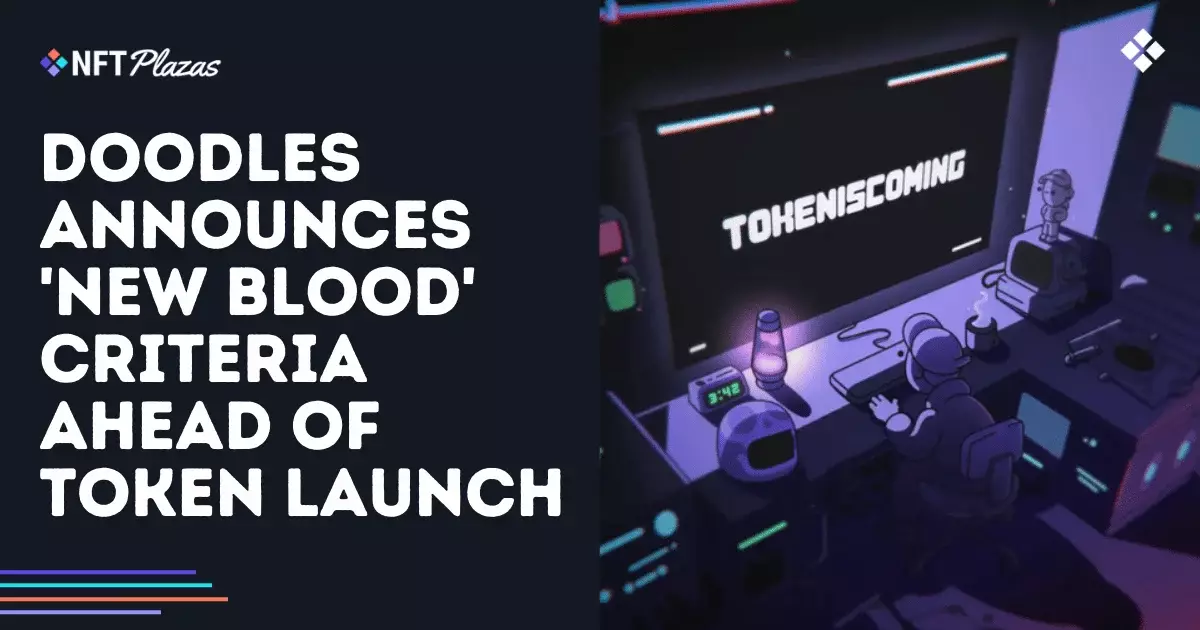In an era where the realm of digital collectibles is burgeoning, the Doodles project is making strides to redefine what community and ownership mean in the NFT landscape. Recently, they announced exciting news about the distribution of their impending $DOOD token through an airdrop targeted at not only their existing holders but also a fresh collective called “New Blood.” This strategic move signifies a shift toward an inclusive approach that invites a wider audience into the fold of blockchain technology and NFTs. However, it begs the question: at what cost does this inclusivity come, and is it genuinely beneficial for the NFT ecosystem as a whole?
The airdrop earmarks 13% of the total $DOOD supply for New Blood, a group specifically identified as potential new community members but not previous Doodles holders. This represents a significant portion of the token’s allocation, highlighting Doodles’ vision to cultivate an expanding network and adapt its strategy to the continuously evolving digital landscape. By utilizing a broad range of participants from various web3 platforms—including SOL and BNB communities—the initiative aims to harness a wealth of diverse talents and ideas.
Analyzing the Token Distribution Model
Looking closely at the outlined distribution strategy, it is apparent that only 30% of the $DOOD token is reserved for the existing Doodles community. While it is commendable that the established base is prioritized, the lion’s share of tokens—25%—is allocated to an ecosystem development fund. This raises potential concerns, as it suggests that the development team prioritizes future growth over current community benefits. Such a strategy could alienate loyal supporters who have contributed to the brand’s success.
Moreover, consider the approach taken with the New Blood community. Unlike existing holders required to register, this new demographic will receive tokens automatically. The accessibility may initially appear generous, yet I wonder about the potential implications of such a system. Without registration and a more structured approach, how can Doodles ensure that the ecosystem remains engaged and that the recipients are genuinely community-oriented participants? The ease of access may attract opportunists rather than passionate advocates of the brand.
The Risks of Automatic Airdrop Systems
Airdrops have a dual-edged nature; while they can spur engagement, they also risk flooding the market with tokens that may lack substantial foundational support. By granting tokens based solely on wallet activity without deeper vetting processes, Doodles may inadvertently breed a culture of “flipping” rather than fostering genuine investment in the community. This concern is amplified in speculative environments such as NFTs, where fleeting money and commitment can overshadow more meaningful aspects of community building.
The introduction of a verification tool is a step in the right direction, but the anticipation surrounding its release places pressure on Doodles to deliver a seamless and effective experience. Failure to do so risks disenfranchising both new and existing communities. A more thorough vetting process could establish a stronger foundation for the Doodles brand by prioritizing not just token distribution, but also the cultivation of meaningful relationships within the ecosystem.
Is Doodles Paving the Way or Losing Its Way?
While the Doodles team shows ambition and forward-thinking strategies in leveraging new technology and engagement tactics, there are inherent risks attached to their approach. The decision to cater extensively to “New Blood” indicates an eagerness to grow but also raises concerns about potential dilution of the brand’s ethos, especially when existing members feel overlooked.
In the fast-evolving NFT market, a delicate balance must be struck between attracting new members and nurturing the existing community. As the Doodles project braces itself for the future, it must carefully navigate the landscape of digital ownership, community engagement, and token economics. How they respond to the consequences of inclusivity, engagement, and market behavior will not only define their legacy but will also shape the broader narrative of NFTs and community engagement in the years to come.


Leave a Reply